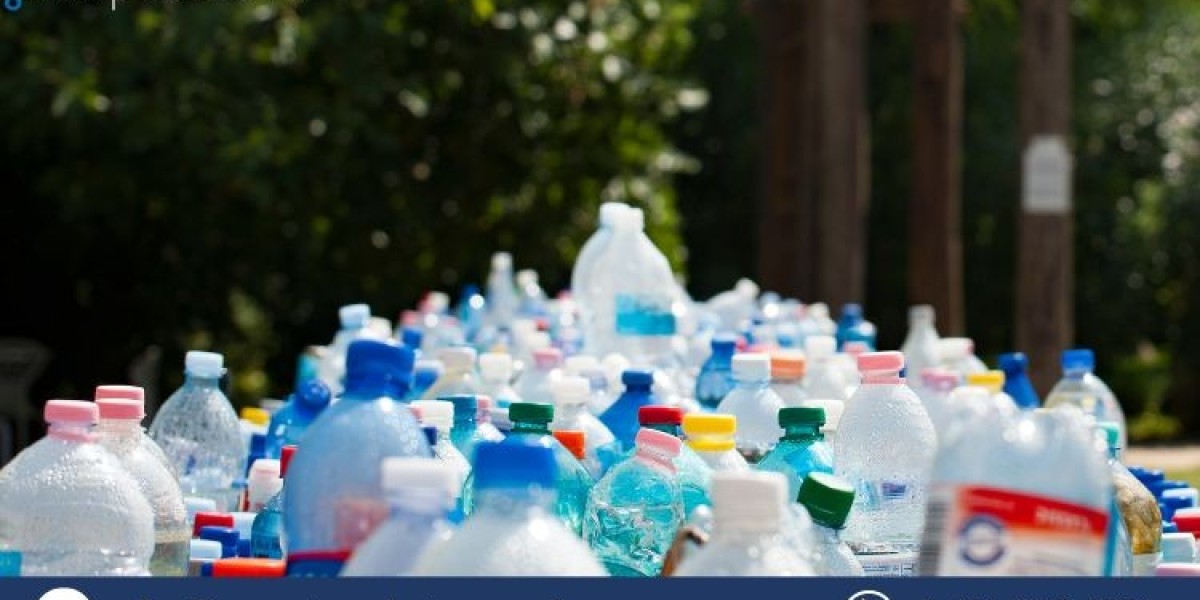Market Overview
The global plastic bottles market size attained a value of about USD 213.32 billion in 2024. The market is further expected to grow in the forecast period of 2025-2034 at a CAGR of 6.3% to reach nearly USD 369.64 billion by 2034. Plastic bottles are one of the most widely used packaging materials across multiple industries, including beverages, food, cosmetics, and pharmaceuticals. Their lightweight, cost-effectiveness, and durability make them a preferred choice for manufacturers and consumers alike. As the demand for packaged products continues to grow, the plastic bottles market is expected to witness steady expansion. Additionally, the rise in e-commerce and convenience packaging is driving the adoption of plastic bottles in various sectors. The increasing focus on sustainability and eco-friendly packaging solutions is also influencing the market, with companies investing in recyclable and biodegradable alternatives.
Market Segmentation
By Raw Material
Plastic bottles are manufactured using different raw materials based on their applications and properties.
- Polyethylene Terephthalate (PET): PET is widely used for beverage packaging due to its lightweight nature, clarity, and recyclability. It is highly resistant to impact and moisture, making it ideal for soft drinks, bottled water, and juices.
- Polypropylene (PP): PP is commonly used in food and pharmaceutical packaging due to its heat resistance and chemical stability. It is preferred for medicine bottles, food containers, and caps due to its high durability and low cost.
- Low-Density Polyethylene (LDPE): LDPE is known for its flexibility and is used for squeezable bottles and soft packaging. It is commonly found in cosmetic packaging and food-grade containers.
- High-Density Polyethylene (HDPE): HDPE is highly durable and resistant to chemicals, making it a preferred choice for milk bottles, shampoo bottles, and detergent containers. It offers excellent strength and resistance to impact.
- Others: Other raw materials, including polycarbonate and bioplastics, are gaining traction due to their sustainability features. These materials are used in niche applications such as reusable bottles and specialized industrial packaging.
By Application
Plastic bottles are utilized in various industries, each with its unique requirements and demands.
- Beverage Industry: The beverage sector dominates the plastic bottles market, with high demand for bottled water, carbonated soft drinks, juices, and alcoholic beverages. PET is the most commonly used material in this segment due to its transparency and lightweight properties.
- Food Packaging: Plastic bottles are widely used for sauces, condiments, cooking oils, and dairy products. The ability to offer secure sealing and extended shelf life makes plastic bottles an ideal choice for food storage and packaging.
- Cosmetics & Personal Care: The cosmetics industry relies heavily on plastic bottles for packaging shampoos, lotions, serums, and body washes. LDPE and HDPE are commonly used in this sector due to their flexibility and chemical resistance.
- Pharmaceutical Industry: Medicine bottles, syrups, and supplement containers require high safety and durability standards. PP and PET are widely used due to their non-reactive and lightweight properties.
- Other Applications: Apart from mainstream industries, plastic bottles are also used in industrial packaging, household cleaning products, and chemical storage solutions. These applications require high-strength and chemically resistant materials.
Regional Analysis
- North America: The demand for plastic bottles in North America is driven by the strong presence of the beverage and personal care industries. Sustainability initiatives and recycling programs are also influencing the market dynamics in the region.
- Europe: Stringent regulations regarding plastic waste management and recycling are shaping the plastic bottles market in Europe. The region is witnessing a surge in demand for bio-based and recyclable plastic bottles.
- Asia-Pacific: The rapid expansion of the food and beverage sector, coupled with urbanization and population growth, is driving market growth in Asia-Pacific. Countries like China and India are key contributors to the rising demand for plastic packaging solutions.
- Latin America & Middle East: Growing disposable incomes and increasing consumption of packaged food and beverages are fueling the demand for plastic bottles in these regions. The expansion of the cosmetics and pharmaceutical industries is also contributing to market growth.
Competitive Landscape
The global plastic bottles market is highly competitive, with several key players investing in product innovation and sustainability. Major companies operating in the market include:
- Alpha Packaging
- CKS Packaging Inc.
- Bericap GmbH & Co. KG
- Plastipak Holdings Inc.
- Graham Packaging Company
- Others
These companies focus on enhancing product design, expanding their production capabilities, and incorporating sustainable materials to cater to the evolving consumer preferences. Strategic mergers, acquisitions, and partnerships are also being leveraged to strengthen market presence and drive innovation.
Future Market Trends (2025-2034)
The global plastic bottles market is set to witness significant transformations in the coming years. Sustainability is a key trend, with increasing efforts towards reducing plastic waste and promoting recycling initiatives. The development of biodegradable and bio-based plastics is expected to gain momentum, addressing environmental concerns. Recyclable and reusable plastic bottles are becoming more prevalent as companies align with regulatory requirements and consumer preferences. Governments across various regions are implementing stricter regulations on single-use plastics, encouraging businesses to adopt eco-friendly packaging solutions. Consumer behavior is also shifting towards sustainable packaging, with a preference for bottles made from recycled materials. Technological advancements in manufacturing processes and material innovations are likely to play a crucial role in shaping the market landscape over the forecast period.








